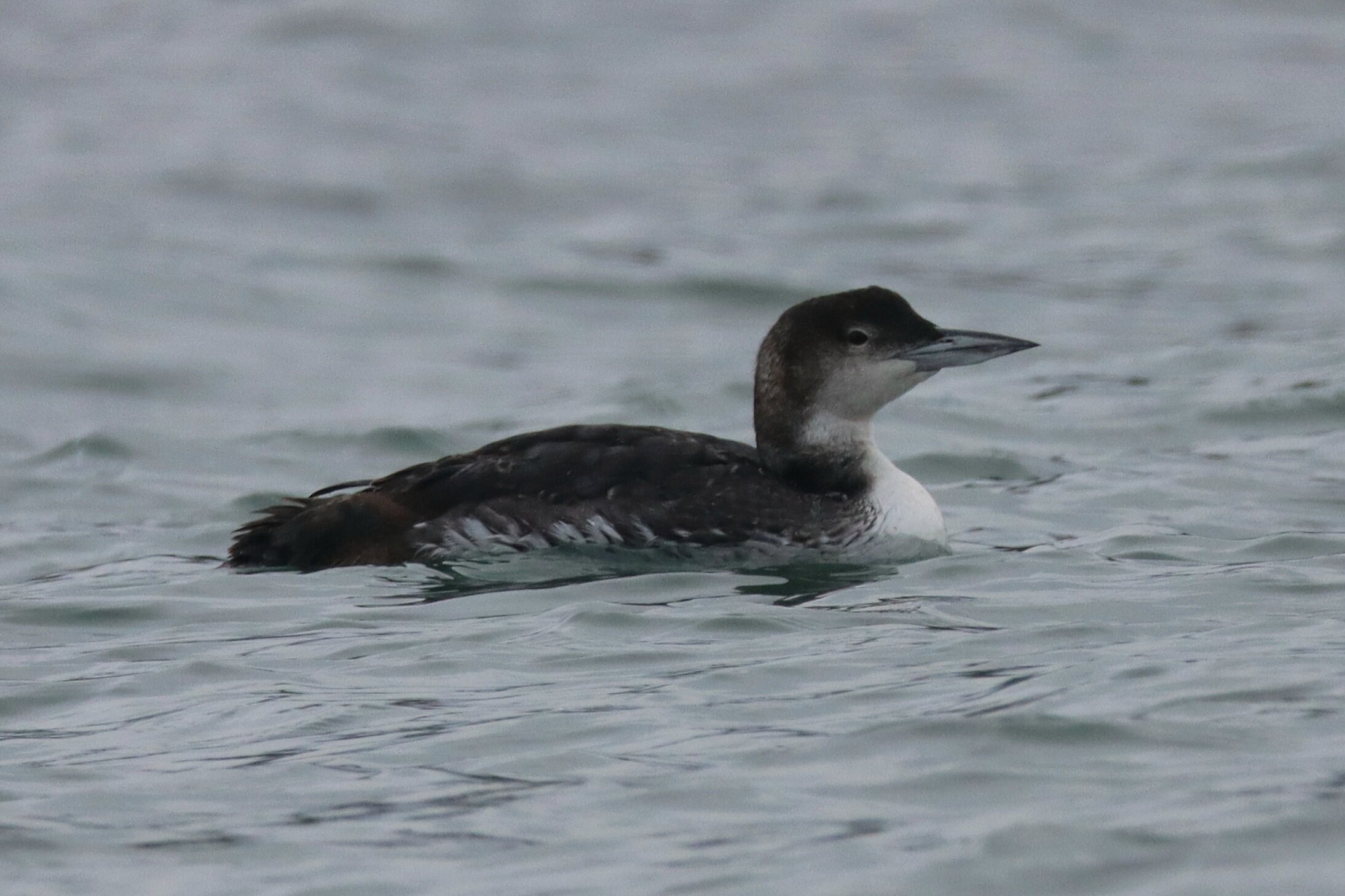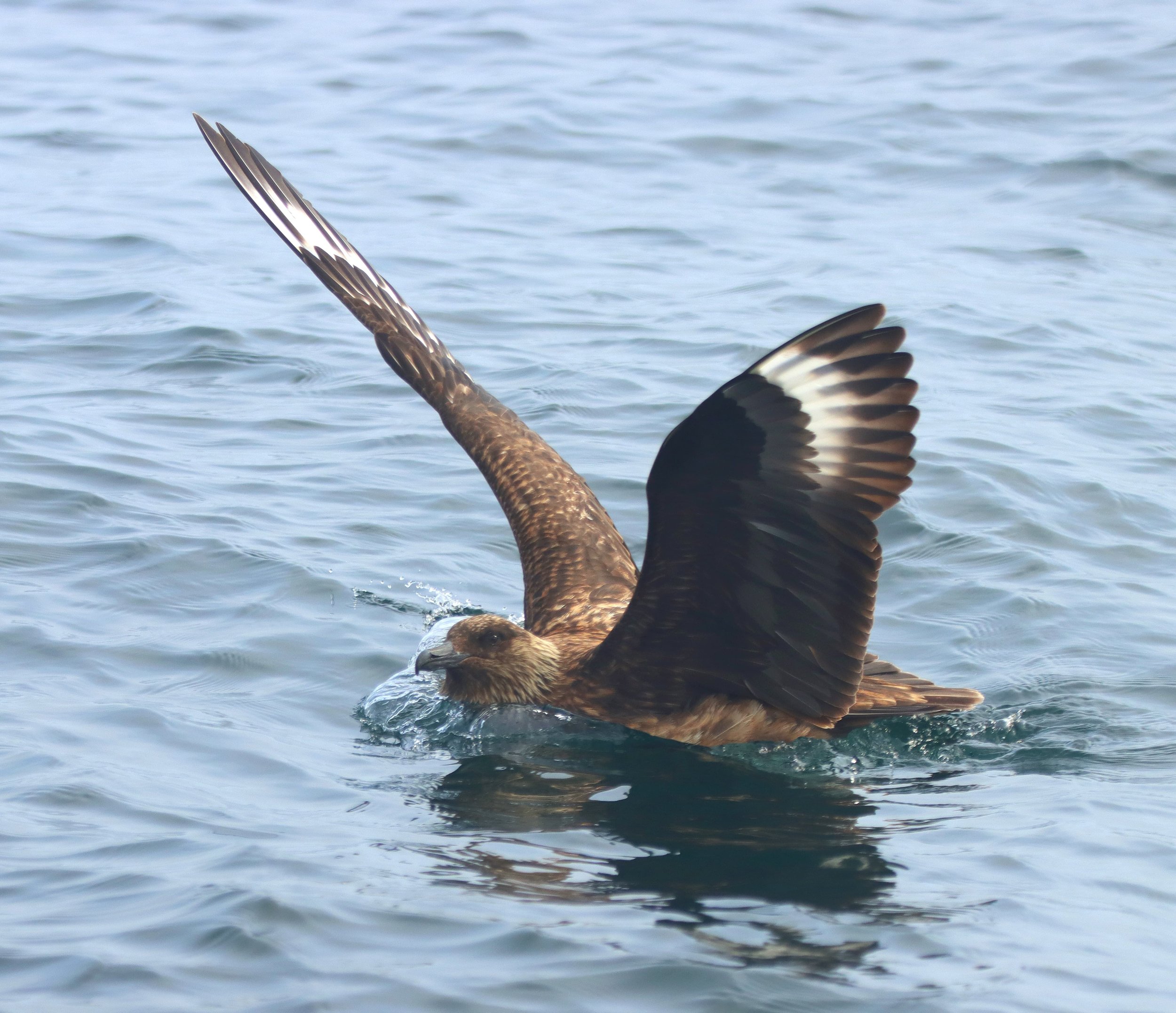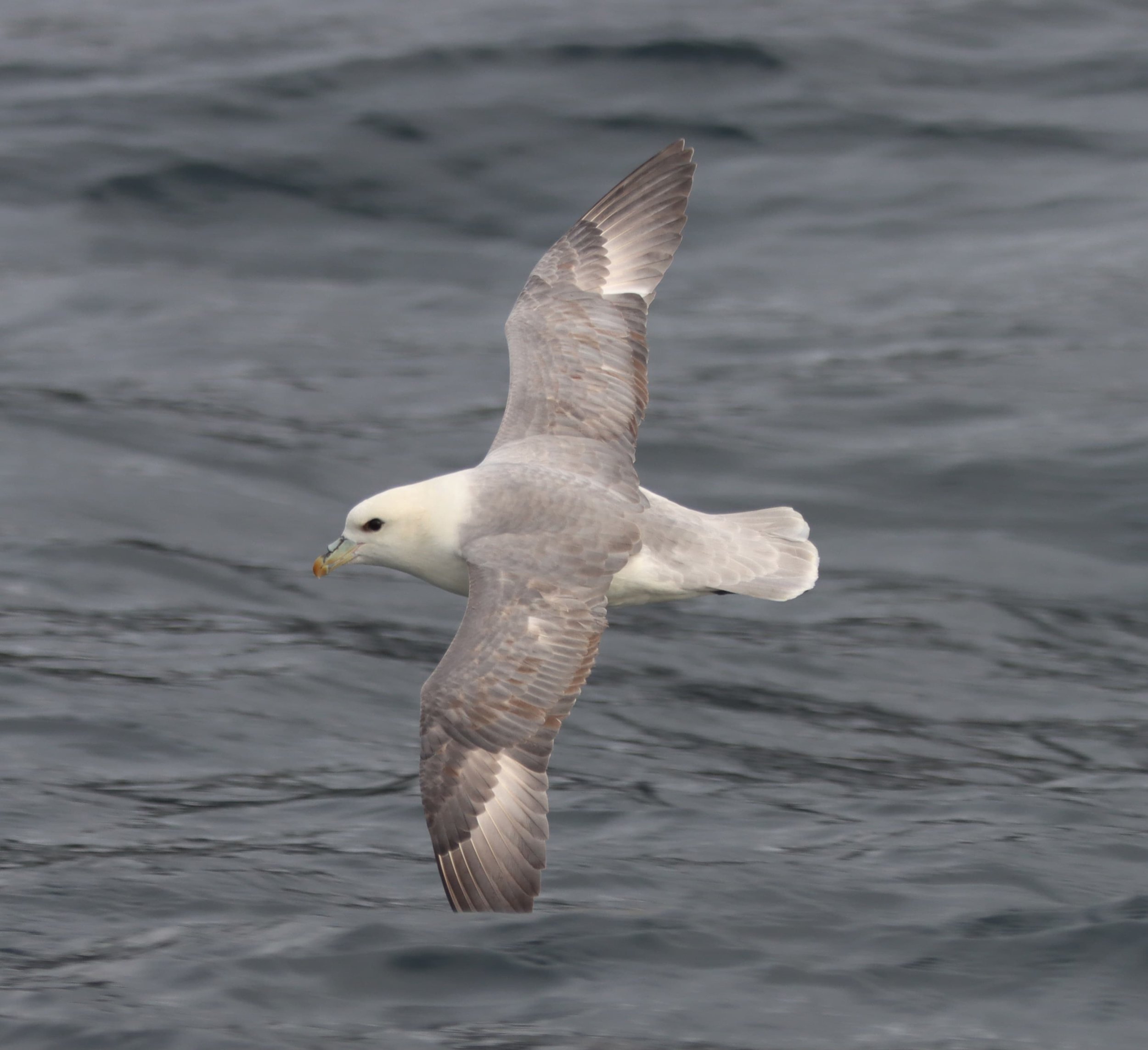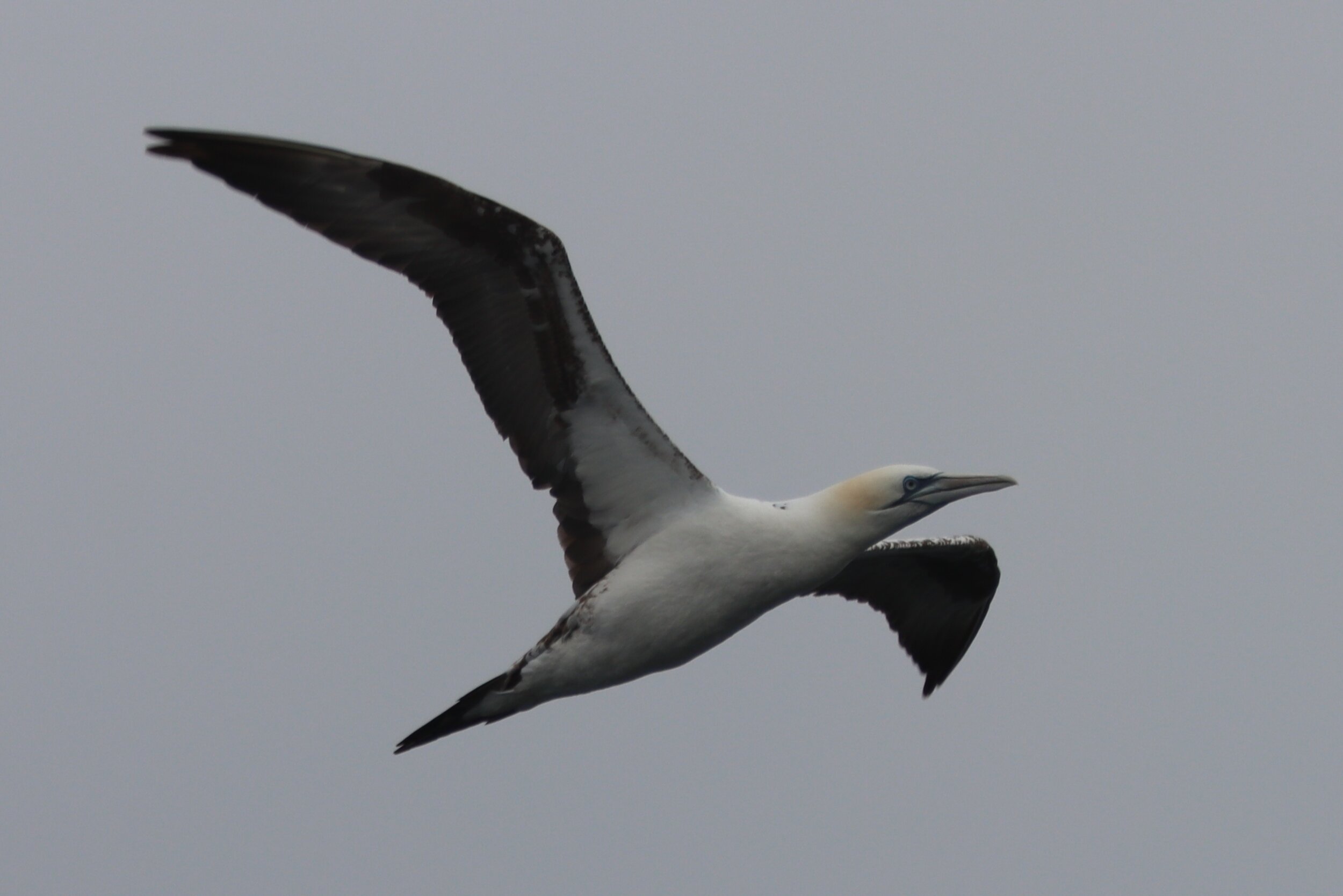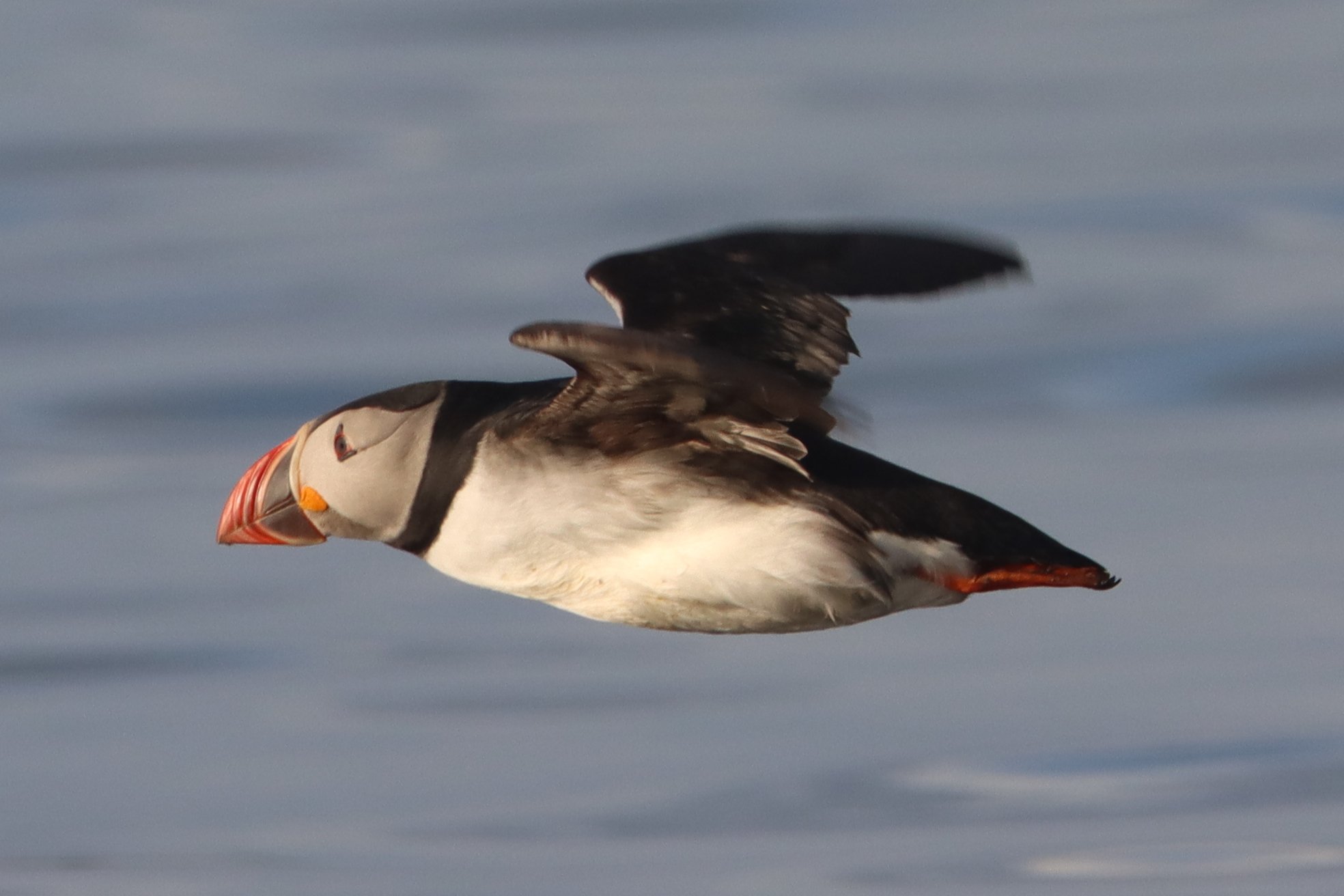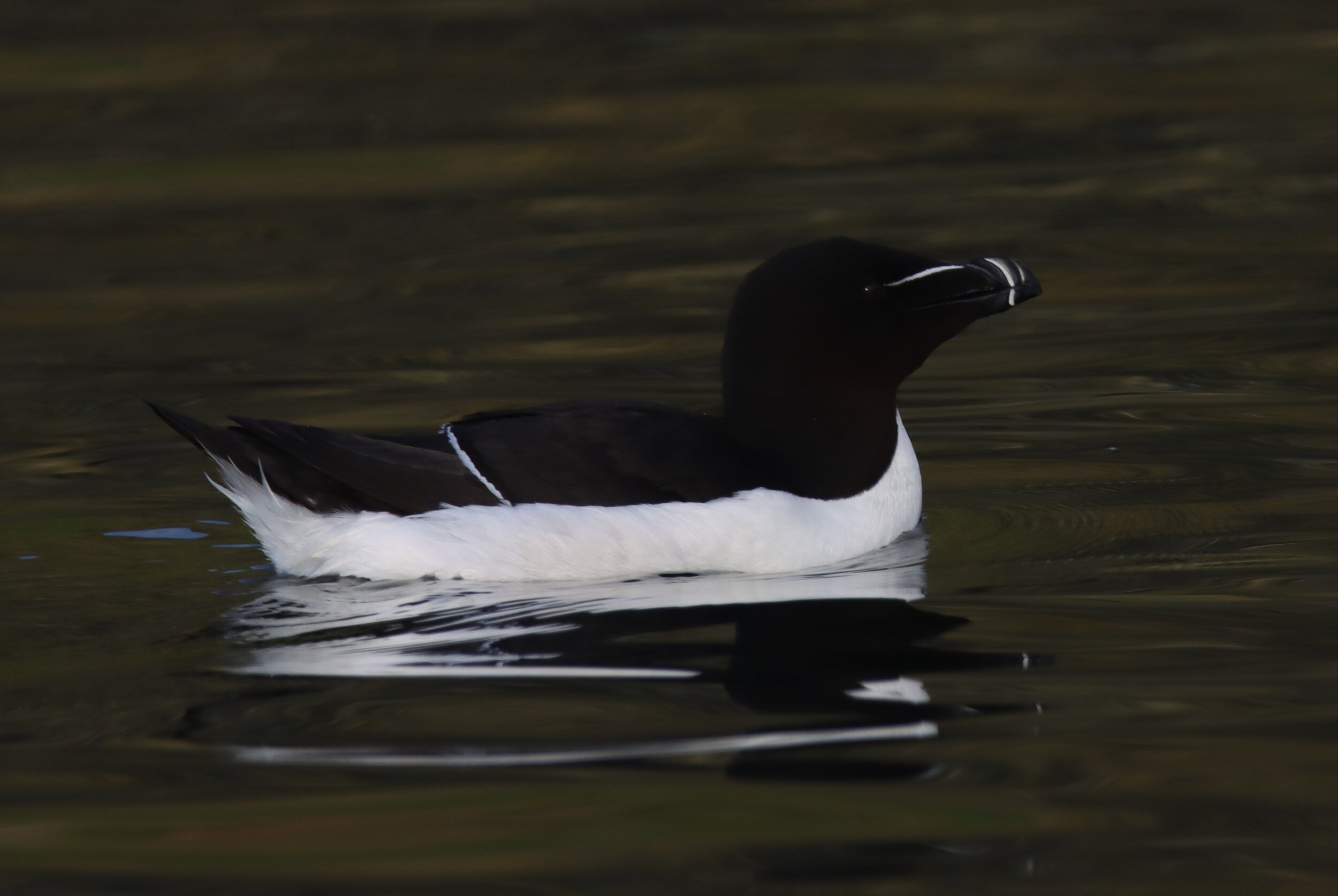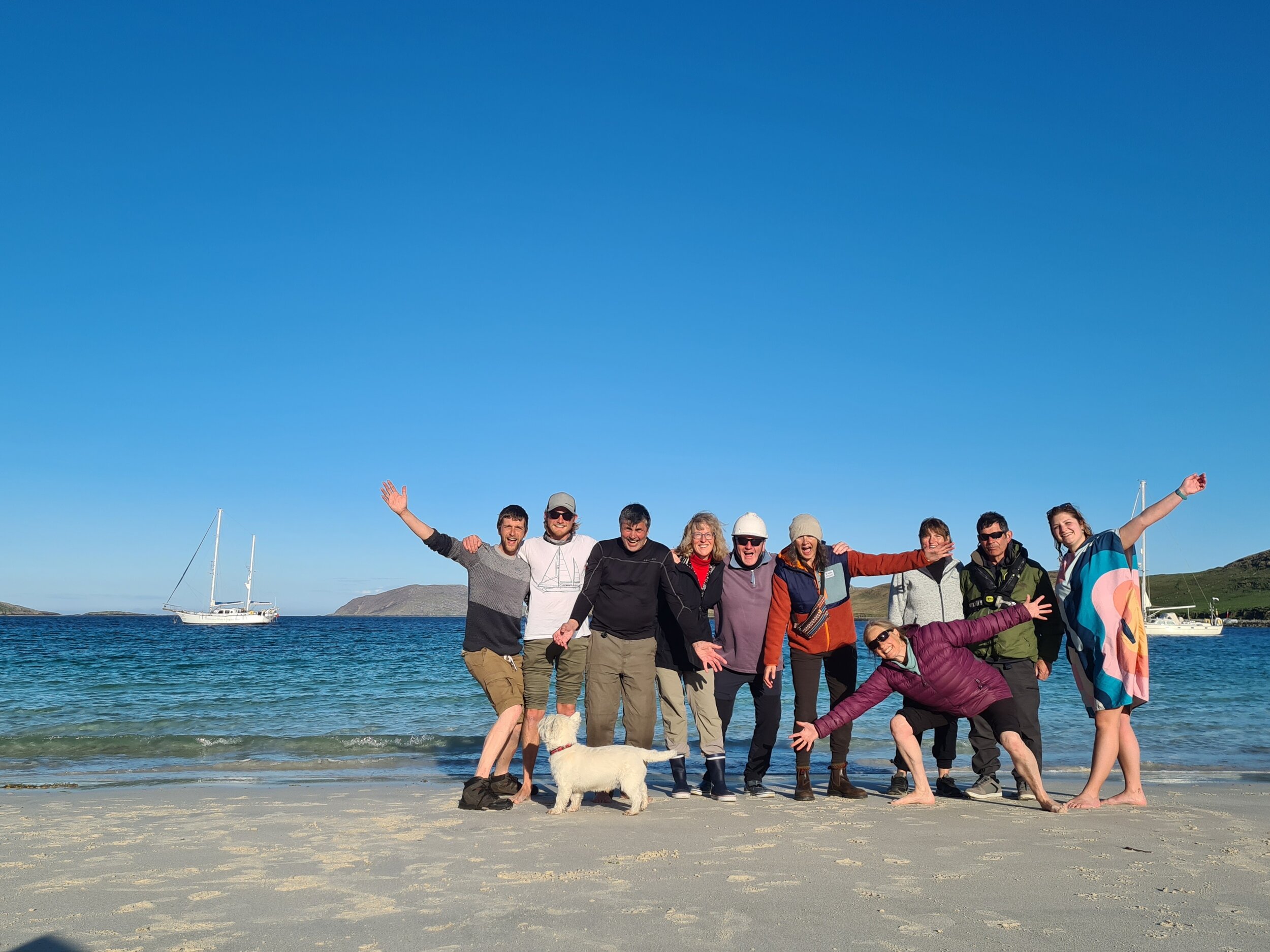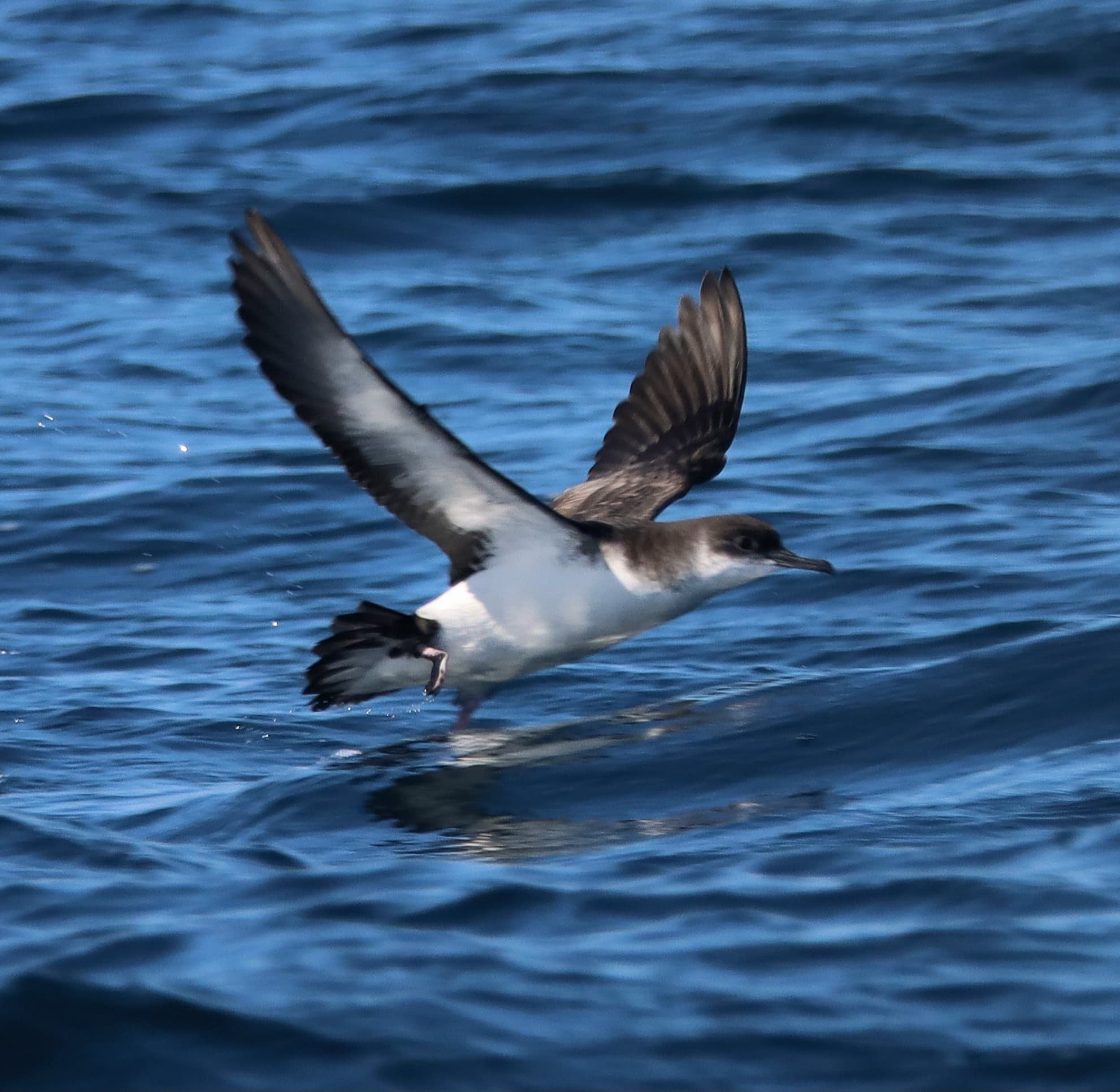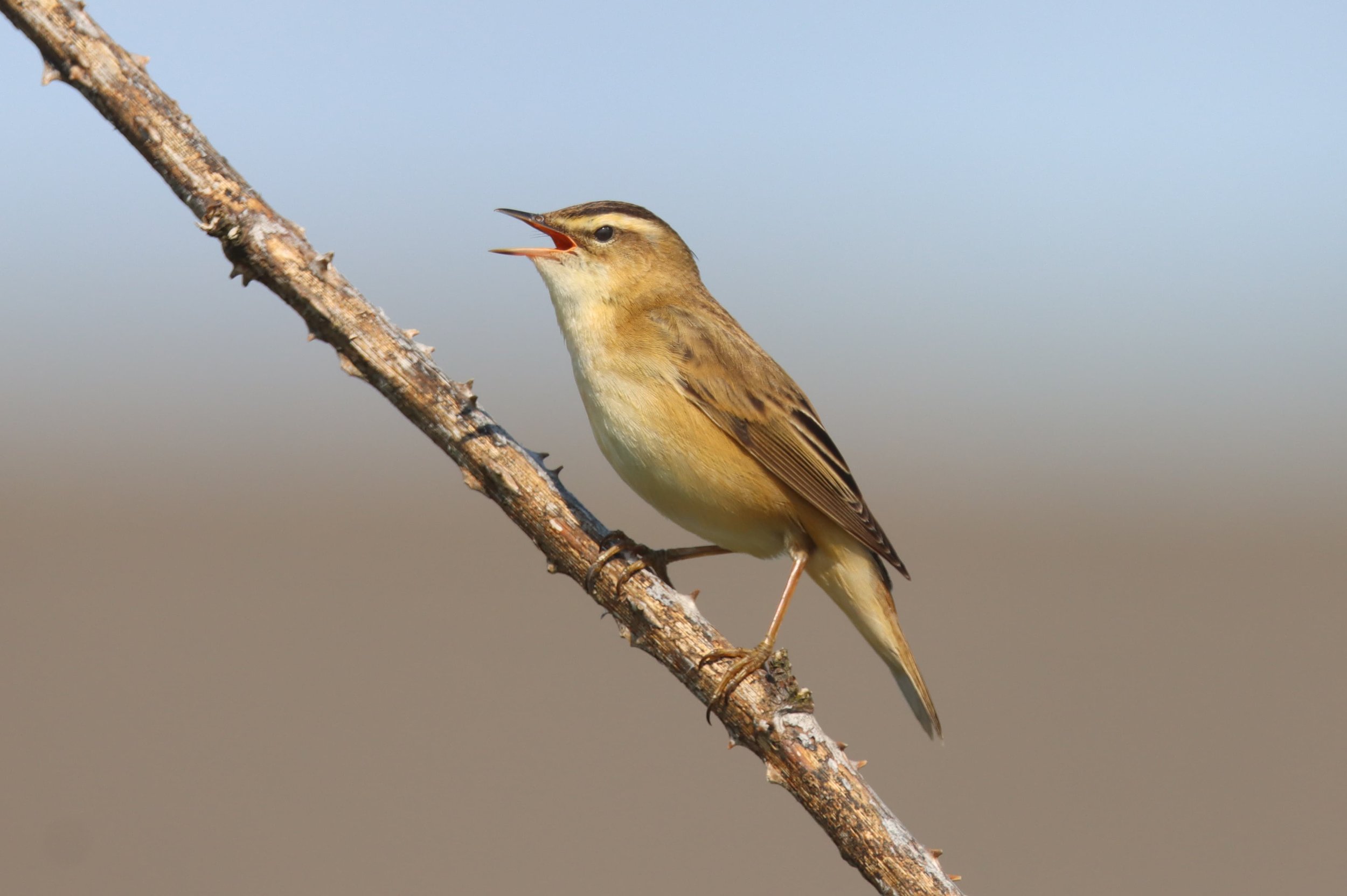Paradise Found - Tales from Silurian
Vaughan, our Volunteer Outreach Assistant, reflects on his experiences during the twelve day monitoring expedition he joined on board our research vessel, Silurian.
Setting sail from Tobermory, there was a sense of great excitement and a tinge of nervousness to the journey ahead. Surveying wildlife was not a new experience to me, but to be conducting surveys amongst endless rows of waves certainly was! I had no expectations for the trip in terms of the wildlife we would see, but we certainly were treated to some of the Hebrides’ most elusive creatures - be it avian, cetacean or mammalian! I had heard tales of the majesty of the islands surrounding the west coast of Scotland, but never in my wildest dreams could I have imagined the beauty that awaited us on isolated shores and rolling seas.
The Singing Sands at Ardnamurchan
We had a few bumpy days to begin with, as the volunteers adjusted to life on the sea. We were greeted with windy and swelly conditions, which really threw us in at the deep end. Our spirits were not dampened however, even if our clothes were. We managed to spot common dolphins around Ardnamurchan and a lunge feeding minke whale that arose from the water, much to the surprise and delight of those on the mast! On the first day’s sailing, we anchored amongst a wall of harbour seals at Gallanach Bay, where we watched a white tailed eagle swoop over to be met by a welcome party of very vocal oystercatchers and an otter snaking around the bay, looking for a meal. The feeling of solace that sitting on the deck in the formative hours of the day provided was certainly something that would not become a fleeting experience on the trip. After a short sail, day two was particularly breath-taking, as we anchored alongside a beach that would not look out of place on a tropical island - the magnificent Vatersay. The golden sands were buffeted by crystal clear waters, reminiscent of a “wish you were here,” kind of postcard! The two beaches sandwiched a vibrant area of Machair amongst the coastal dunes. The melodic songs of the skylarks, linnets and meadow pipit enlivened the landscape as we crossed over to the second beach.
Vatersay Beach
Vatersay from the anchorage.
Whilst everyone took advantage of the tranquil waters for a swim at Vatersay, myself and Jake noticed a mysterious shape on the beach, one that looked somewhat familiar from our previous day’s sailing. A dead minke whale…curiosity got the better of us, so we went to investigate it. Not particularly the romantic Hebridean experience I was expecting, but certainly an interesting one, to see this iconic Hebridean cetacean at close quarters. We certainly kept our distance, knowing a whale’s propensity to explode through gas build up! We awoke at Vatersay to another wee otter doing the rounds and having an early morning snack and after a morning detour to Barra, we got back into the all important science! Our crossing to the lushly coated green boggy grasslands of Berneray, on the Southern tip of the Outer Hebrides, was truly incredible. The minke whales were very active and every five minutes the word, “sighting” was ringing in our ears from the spotters on the mast! A total of 8 showed off their long backs with relatively small sickle like fins, which meant we spent most of the trip “with whale.”. Then, as we approached Berneray, I spotted two fins almost side by side. The snaky, side to side motion suggested this wasn’t a mammalian sea beastie and my excitement started to get the better of me! One of FIVE (yes FIVE!) basking sharks was visible from the front of the boat. This is an animal I had long wanted to encounter in these waters, so to be able to spend some time observing it was truly magical. We anchored and had a shore visit to Berneray, where again the skies were patrolled by a white tailed eagle, scouring the landscape for a tasty morsel of food. A basking shark was swimming in the waters close to the boat and behind it in the mirror calm seas was a minke whale, surfacing regularly and being dive-bombed by a group of gannets and other seabirds. What really captured my attention, however, was a sound coming from the flag iris on the shoreline, almost like a constant scraping of a wooden instrument! Sitting patiently and still by the same flag iris, a corncrake walked brazenly out into the open grassland and revealed itself to me, clearly trying to compete for the title of “wildlife encounter of the day!”
Corncrake on Berneray
Corncrake calling
As the sun dawned on a beautiful anchorage at Bernaray, the sound of the corncrakes echoed across the yellow and green hillside and through the saloon windows. Breakfast was another chance to watch the gannets diving into the water, like bright white arrows, whilst recovering from the magnificent intensity of the previous day. We left anchor and headed around the island towards a vibrant and bustling seabird colony, which was awash with kittiwakes, gannets, razorbills, common and black guillemots, puffins and thousands of fulmars. The great skuas were heavily outnumbered, but had ample opportunity to show off their kleptoparasitism, whereby they swoop in and appropriate the hard earned catches of the other seabirds. The top of the hillside by the lighthouse was keenly patrolled by the white tailed eagle, who would have her pick of the seabirds below. On route to South Uist, we encountered a familiar basking shark that had a heavily scarred fin, as seen the previous day. In the distance arose a large minke whale and as we moved closer a second emerged from the soupy seascape. The rest of the journey was windy, but it gave an opportunity to feel a sense of flight whilst stood on the mast. I did my best Jack and Rose impression as I spread my own wings! We arrived at Lochboisdale in South Uist and were delighted to have a chance to hop ashore and grab a shower and some signal!
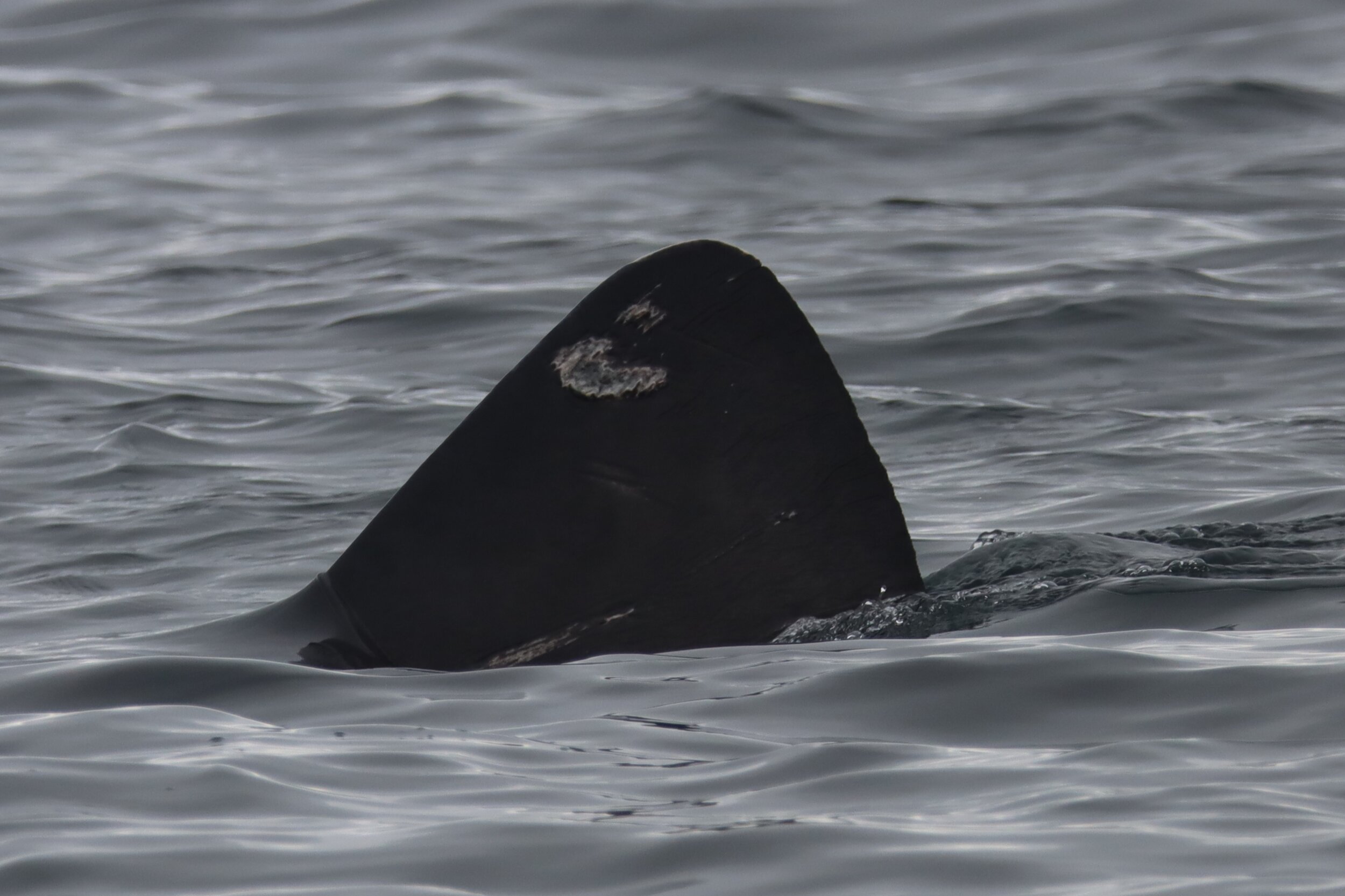

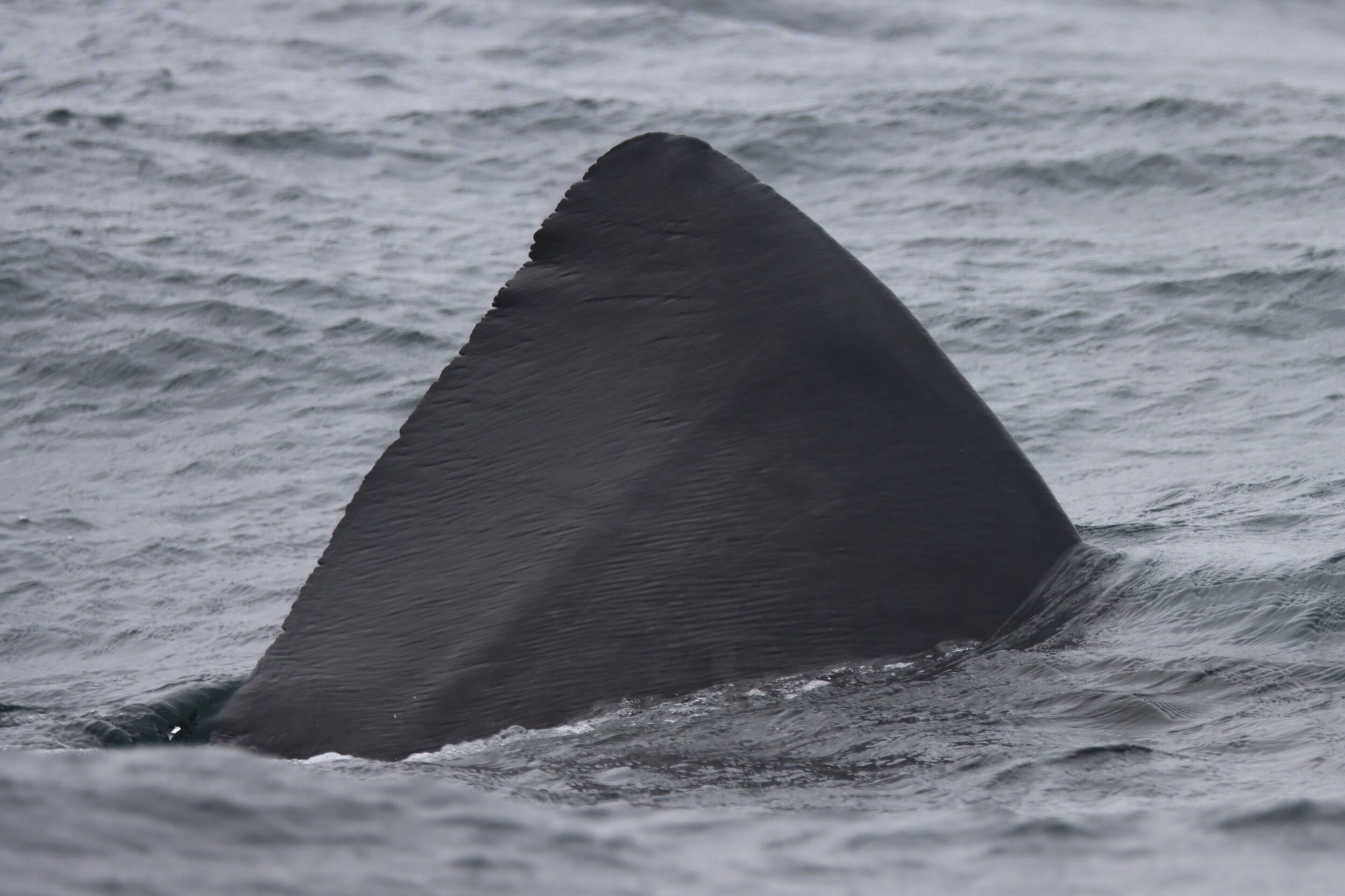
Basking Shark
Immature White Tailed Eagle
Berneray
We were treated to a smorgasbord of sensory splendour as we spent a day sailing around Mingulay. The sights, sounds and smells of the 1800 fulmar, 2200 puffin and other sea birds provided a real spectacle and one that was a real wow moment of the trip. To be immersed in a truly wild setting, with the privilege of sailing through a carpet of white and black birds covering the sea surface was unforgettable. We then headed up to a place where the rocks arose from the sea in formations reminiscent of the minke whales’ feeding technique. A place that was so isolated from civilisation, just being present in the area gave a visceral sense of oneness with the nature that surrounded us. A poignancy I think we all could appreciate, given the challenges the natural world faces and certainly one that allowed us to focus on the importance of the work the Trust does more broadly. The cares and troubles of the modern world were washed away in crystal blue shores, which were contrasted by the darker hue of the rainy and overcast skies. The brightest sunlight imaginable regularly peeked through the overcast clouds to paint rainbows over the hillsides, which just added to the majesty of this special place. Our anchorage was amongst a bustling colony of guillemots, razorbills, puffins, shags and fulmars. All the while a cacophony of calls rang in our ears, which only intensified as one of the immature white tailed eagles took to the wing - some times to harry the seabirds and others to enact some territorial posturing with the other three eagles present. The eagles danced the dosey doe, talon to talon, in an aggressive congress. As we landed on the island, we were able to observe this at close quarters and some of the most amazing views I have ever had of the species. A smaller bird on the island, which perhaps was easy to overlook, sang it’s metallic yet melodic song from the grasslands that played host to my picnic. A flash of a red-ish rump was the confirmation that this bird was, in fact, a male twite. I watched it hopping between rocks, as 3 more emerged from the rocky cliffside. Another rare breeding bird for the UK, which has strongholds on the west coast.
The Anchorage at the Shiants
Twite
After leaving the Shiants, we headed back on the return leg towards Tobermory - stopping at a few anchorages around Skye - one of which was the heavily populated Isle of Soay (there were 2 families living there!). This was the site of the last basking shark station which closed in 1994. As we pulled in, the Cuillins of Skye were visible in the distance and provided a ‘Mordor’ style appearance to the anchorage. I had a feeling that if we were going to encounter another iconic Scottish raptor on this trip, the golden eagle, this would be it. I primed the guests to have a stare over to the hillsides just in case and low and behold, no sooner than when my binoculars were raised, another white tailed eagle skulked along the skyline. This sparked my interest because any self respecting golden eagle would most certainly take to the wing to ward off this rival in its territory. Just like that, we had 2 golden eagles on the wing mobbing the white tailed eagle, much to the delight of the volunteers. The island had a deciduous native woodland and the melodic menu of willow warblers, song thrushes and blackcaps provided us with an audible feast. We had been a little bit lacking on the cetacean front for a few days, after our numerous encounters in the first week, but as we headed towards Eigg, we encountered some common dolphins that put on a fantastic show for us, which included some sexual behaviour, swimming belly to belly and dancing in congress beneath the waves. Another ornithological highlight was spotting two Arctic skuas, which are the thinner, pointier cousin of the great skua, returning for the season.
Basking Shark Station at Soay
Common Dolphin
Common Dolphins
Our final stop after Eigg, was a picture postcard setting and one that provided its own musical accompaniment, in the form of quartz crystal sands that sang underfoot as we walked along them. We explored the coniferous woodland, in a hope of spotting some red squirrels or a pine marten, but we made do with an otter spraint that I had anticipated would be left alongside the freshwater stream that weaved its way through the trees into the sea. The beach was one that would not look out of place in an art gallery, the beauty of the sandy shores with the standing rocks and overarching tree-scape was almost dream-like. I spotted a red throated diver and another otter in the evening, before enjoying a final slice of tranquillity at 6am the next morning. This had been something I had grown accustomed to, being an early riser. The silence of waking up in such an isolated area was calming for the soul and a profound experience, which I will never forget. Although my mind was tired, my senses were so alive that it was almost a shame to have to leave and make breakfast! The final leg was choppy and a little more compromising in terms of being plain sailing, but as they say, “all’s swell, that ends swell,” - or well, maybe my awful puns say. We were still blessed, however, to spot a breaching minke whale amongst the waves, which certainly excited our Skipper who almost jumped off the boat with excitement. There were two more on the way around Ardnamurchan Lighthouse and the ever present harbour porpoises put on their best show of the trip, with 12 encountered on the final day in total.
Minke Whale
Minke Whale Surfacing
I am eternally grateful for this amazing experience and would encourage anyone that is thinking of booking a place on Silurian to do so. I was blessed to join a team of volunteers who really enhanced what was already a life changing experience, so I would like to thank them for their incredible endeavour in challenging conditions at times (not just putting up with me)! Below are a few more pictures from the trip, I hope you enjoy them as much as I did seeing them!
